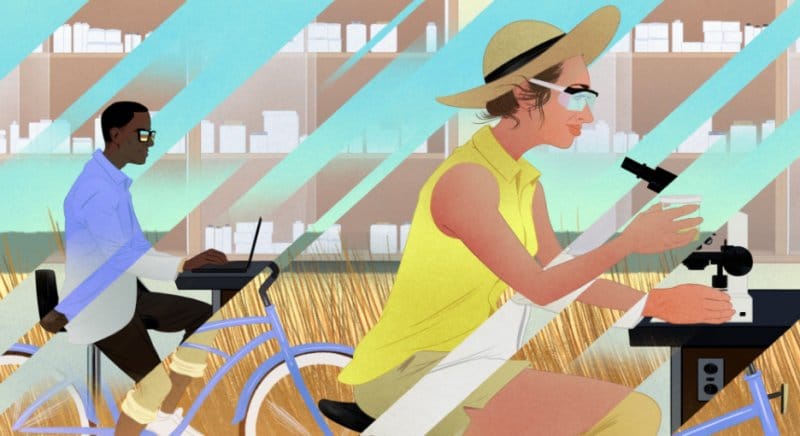For centuries, science has been the pursuit of amateur, self-funded and self-motivated scientists: Sir Isaac Newton, Benjamin Franklin, Charles Darwin and Thomas Edison – to name just a few. However, in the first half of the 20th century, science became dominated by researchers employed by universities and government research laboratories. It isn’t surprising: the scientific revolutions of the 20th century have created a hyper-complex environment, divided into endless fields of expertise, each of which requires years of training to become an expert or to master a skill. Remember Malcolm Gladwell’s 10,000-Hour Rule? In his 2008 best-seller “Outliers: the Story of Success” he argues that only by reaching 10,000 hours of practice could one become an outlier.
However, already in the 1970s, this transformation was being called into question, when scientists started calling for a democratization and decentralization of science, bringing science back to nature-loving amateurs in the tradition of Descartes, Newton, and Darwin. Today, with the growing popularity of crowdsourcing, and with the abundance of IT platforms which empower crowd participation, a new type of scientist is emerging: The Citizen Scientists, also known as community science, crowd-science, crowdsourced science.
The terms citizen science and citizen scientists are defined by the Oxford Living Dictionary as “The collection and analysis of data relating to the natural world by members of the general public, typically as part of a collaborative project with professional scientists.” That means that a Citizen Scientist is a person who feels responsibility to the greater good, and who is engaged in collaborative scientific work, usually under the guidance of a “professional” scientific establishment.
Citizen scientists can accelerate research in almost any field. Chris Lintott, a professor of astrophysics and the citizen science lead at the University of Oxford, argues that the projects he leads are collaborative endeavors that anyone could get involved in, since they require the identification of patterns in data, graphs, or images, which anybody can perform after a short tutorial. Lintott knows what he is talking about: is a co-founder of Galaxy Zoo, a citizen science project in which volunteers classify types of galaxies, and the principal investigator for the Zooniverse citizen science web portal.
There are scores of examples for this crowdsourced science: a classic example is that of Tim Gowers, who posted in his blog a mathematical question and in a matter of days the commenters had solved it. This gave birth to the Polymath Project, an online effort to solve some mathematics problems. In July 2017, NASA asked citizen scientists to participate in an experiment during the August solar eclipse. Participants were asked to collect cloud and air temperature data and report it using smartphones. The observations made by citizen scientists will be used to produce an interactive map. Finally, the Milky Way Project is another example of citizen scientists helping classify images from space. In this case, volunteers study infrared images from the Spitzer Space Telescope and WISE satellite, in order to classify various objects. Citizen scientists helped astronomers source “yellowballs,” star-forming regions, as part of this project.
Indeed, there are a number of challenges to consider when involving a large group of participants with diverse backgrounds in scientific projects: some projects may not be suitable for volunteers, for instance, when they use complex research methods or require repetitive work. If volunteers lack proper training in research protocols, they are at risk of introducing bias into the data. Others may lie about data. This risk is even greater when prizes are awarded as an incentive to participate. Finally, the question of data accuracy remains open. While these risks cannot be overlooked, involving the crowd in relevant phases of a scientific work, could really be a force multiplayer, and promote scientific breakthroughs.
Want to get involved? Advancing human understanding in many scientific fields is your dream? There are many resources out there for finding citizen science projects and getting involved. We have already mentioned the Zooniverse platform has many opportunities, as do iNaturalist, Crowdcrafting, and CitSci.org. Who knows – you might discover something really cool and significant, which isn’t only important, but also a great deal of fun.
We are on our own voyage of discovery, using the BOLD Awards program to find the boldest scientific crowdsourcing project completed in the past two years (it could have started earlier). This is one of 12 categories of awards that will be presented at a ceremony in Venice, Italy, on April 5 2019. You can enter your own project up to February 8. Initial entries will be posted online for public voting from February 9 to reach a shortlist of five entrants per category, with an international judging panel involved to select a final winner. Good luck!





0 Comments